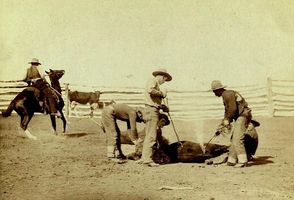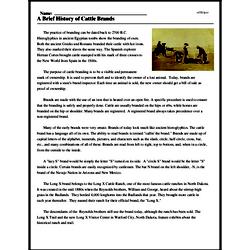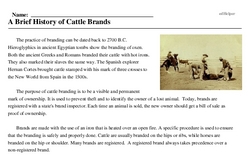A Brief History of Cattle Brands
The practice of branding can be dated back to 2700 B.C. Hieroglyphics in ancient Egyptian tombs show the branding of oxen. Both the ancient Greeks and Romans branded their cattle with hot irons. They also marked their slaves the same way. The Spanish explorer Hernan Cortes brought cattle stamped with his mark of three crosses to the New World from Spain in the 1500s.
The purpose of cattle branding is to be a visible and permanent mark of ownership. It is used to prevent theft and to identify the owner of a lost animal. Today, brands are registered with a state's brand inspector. Each time an animal is sold, the new owner should get a bill of sale as proof of ownership.
Brands are made with the use of an iron that is heated over an open fire. A specific procedure is used to ensure that the branding is safely and properly done. Cattle are usually branded on the hips or ribs, while horses are branded on the hip or shoulder. Many brands are registered. A registered brand always takes precedence over a non-registered brand.




